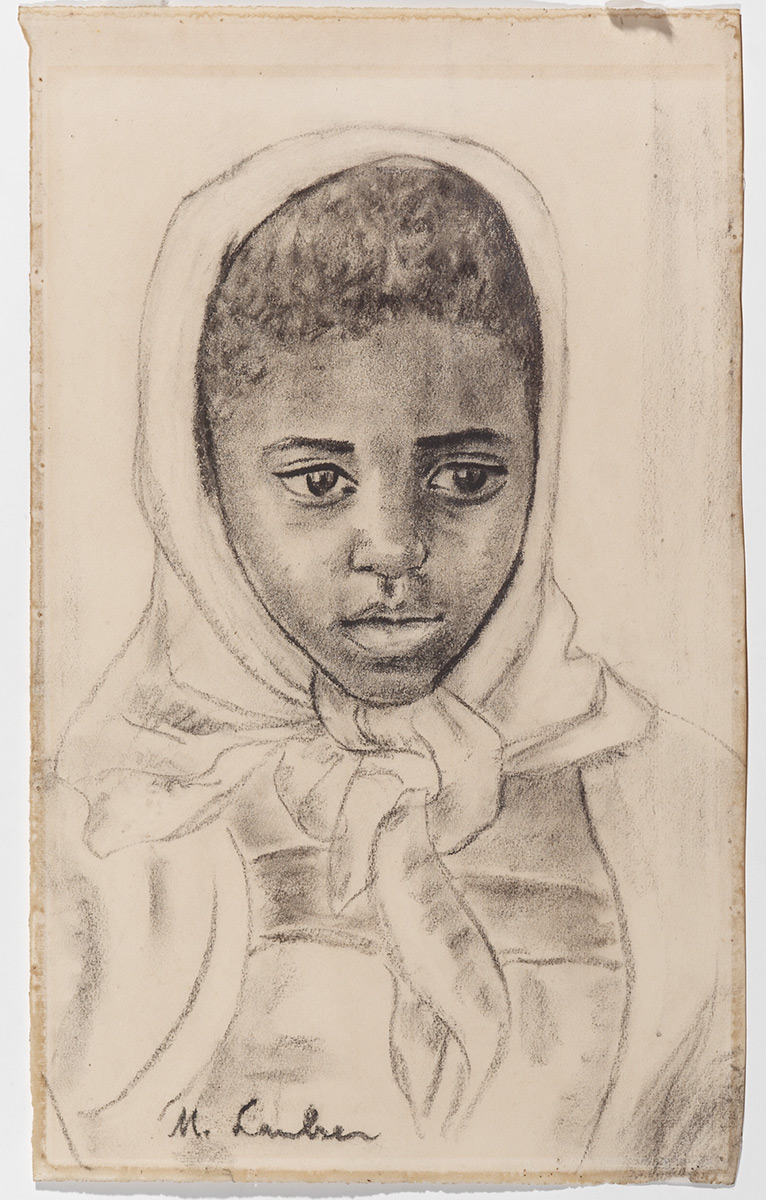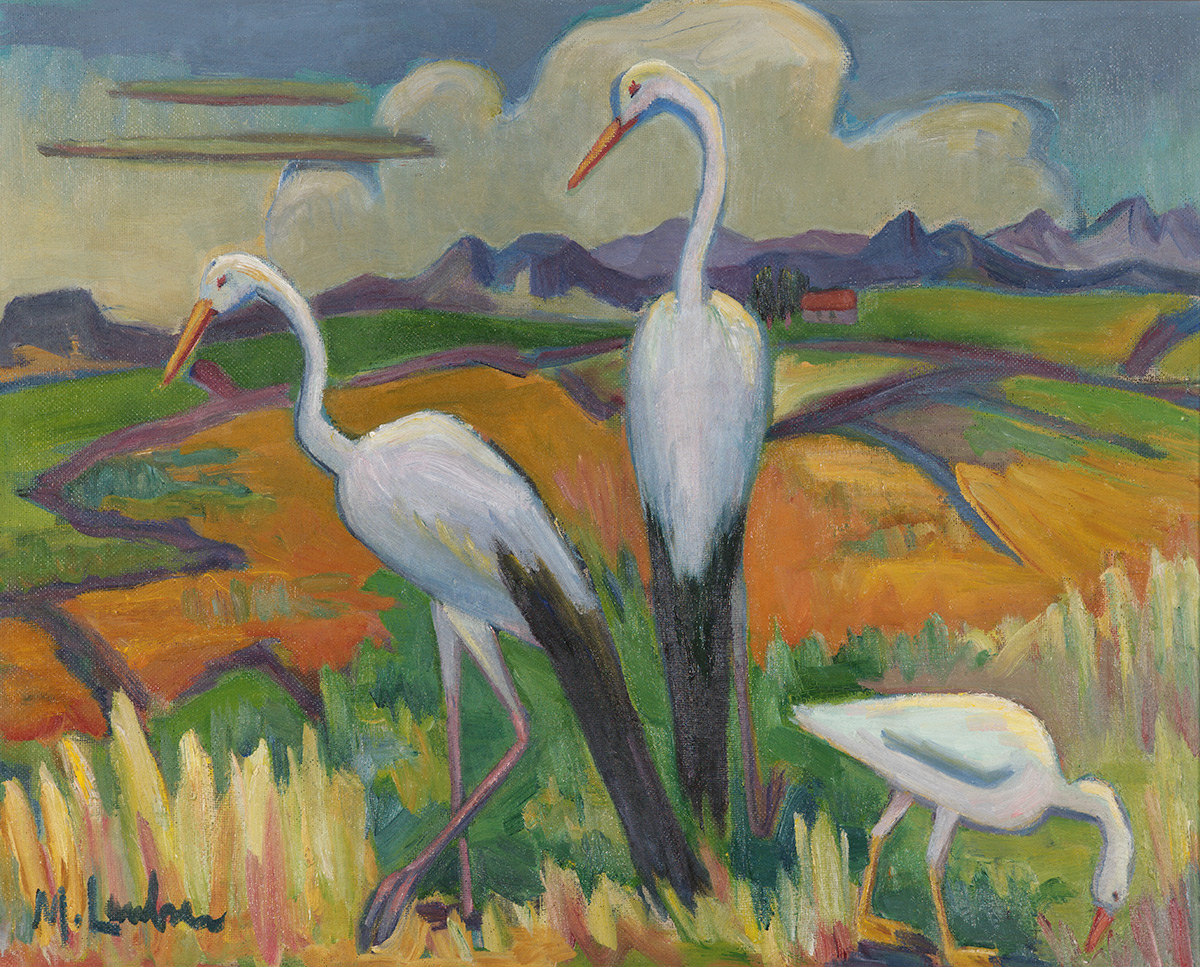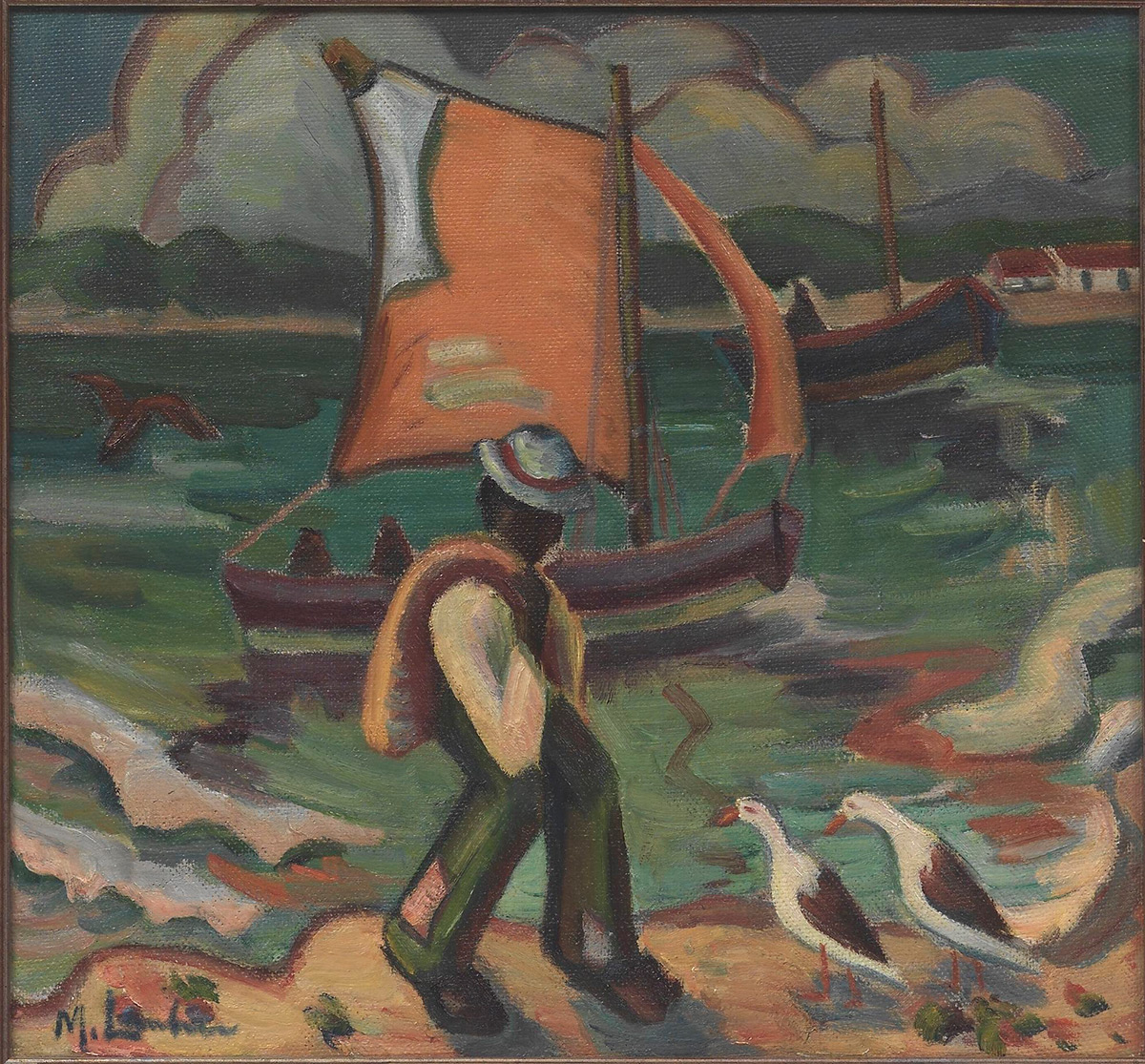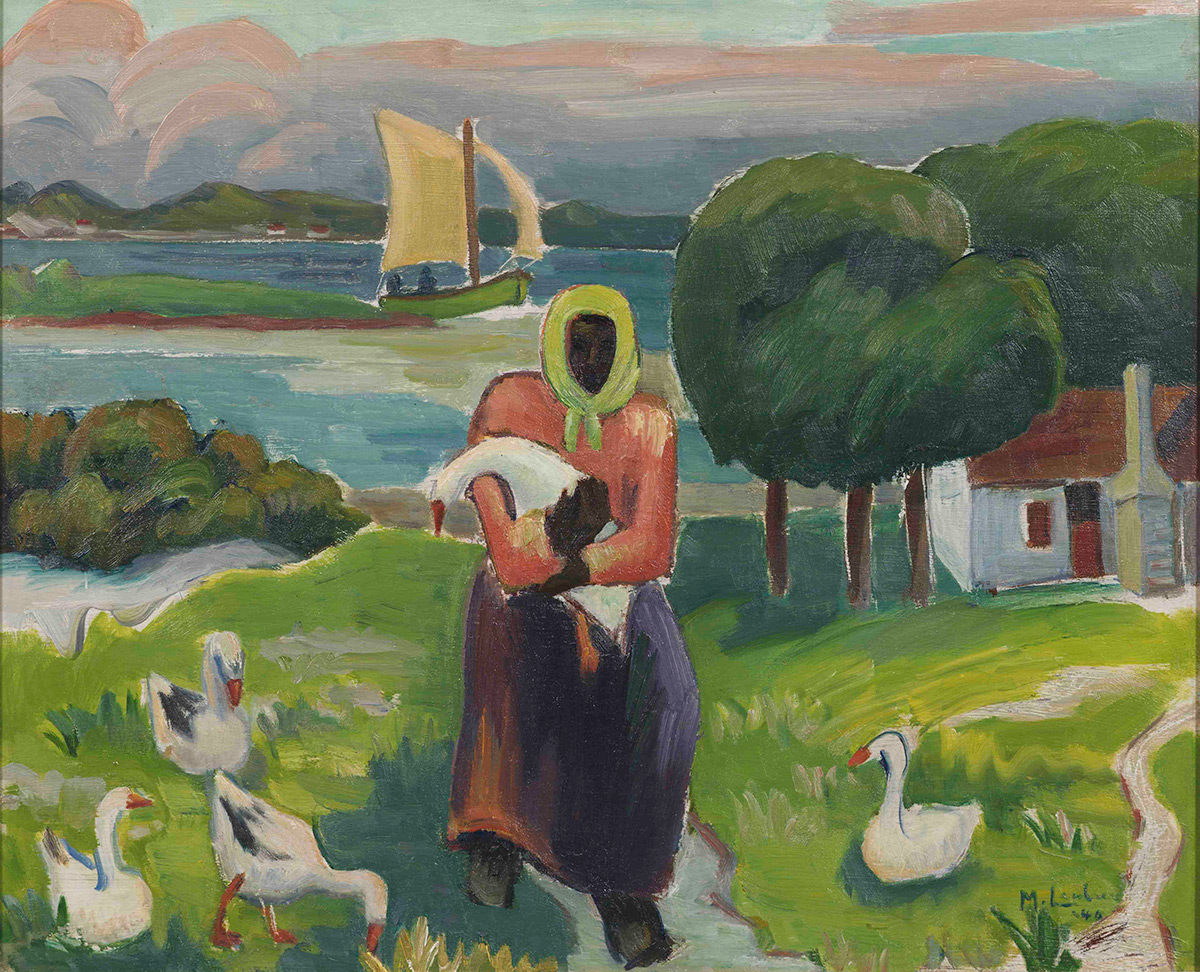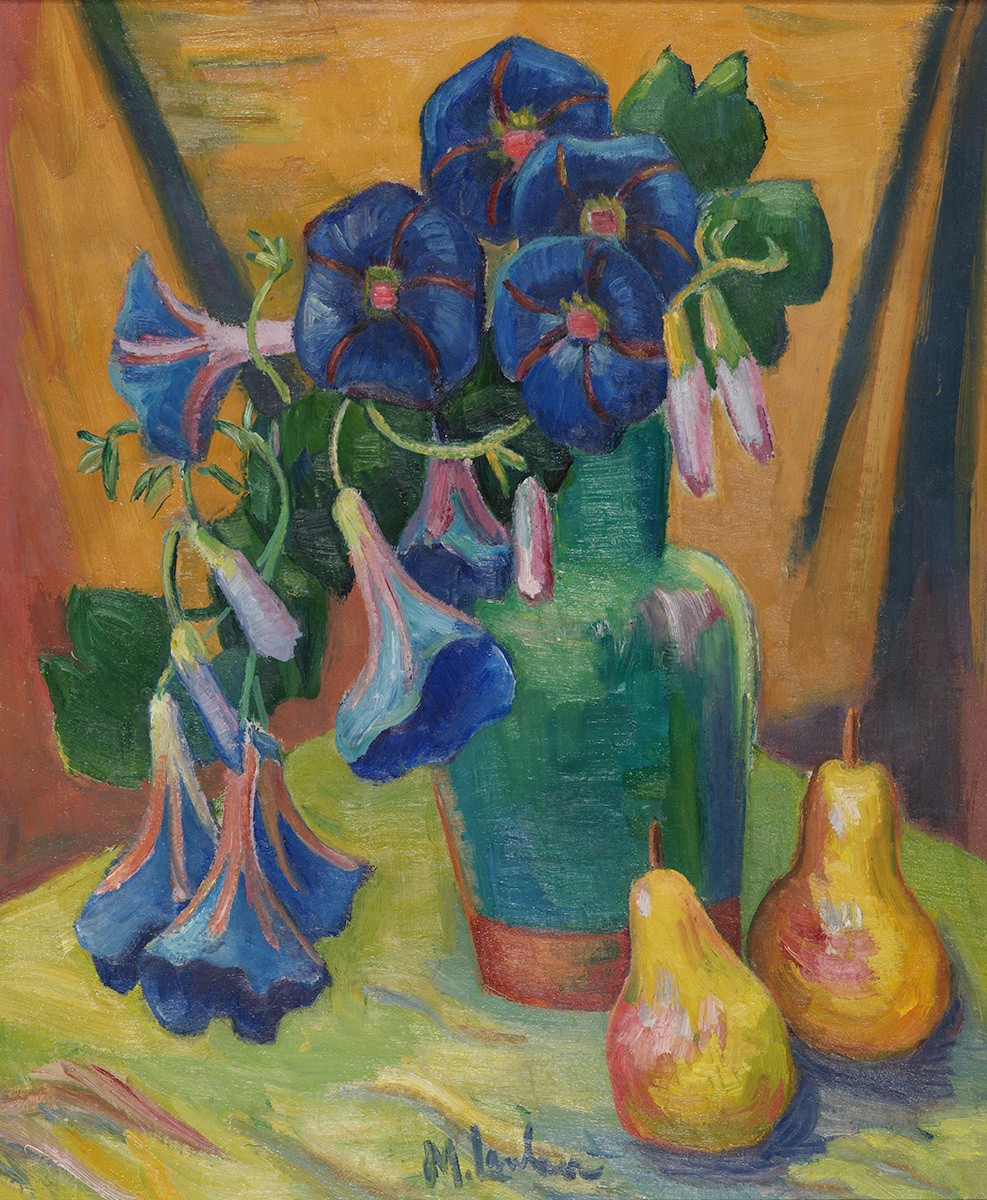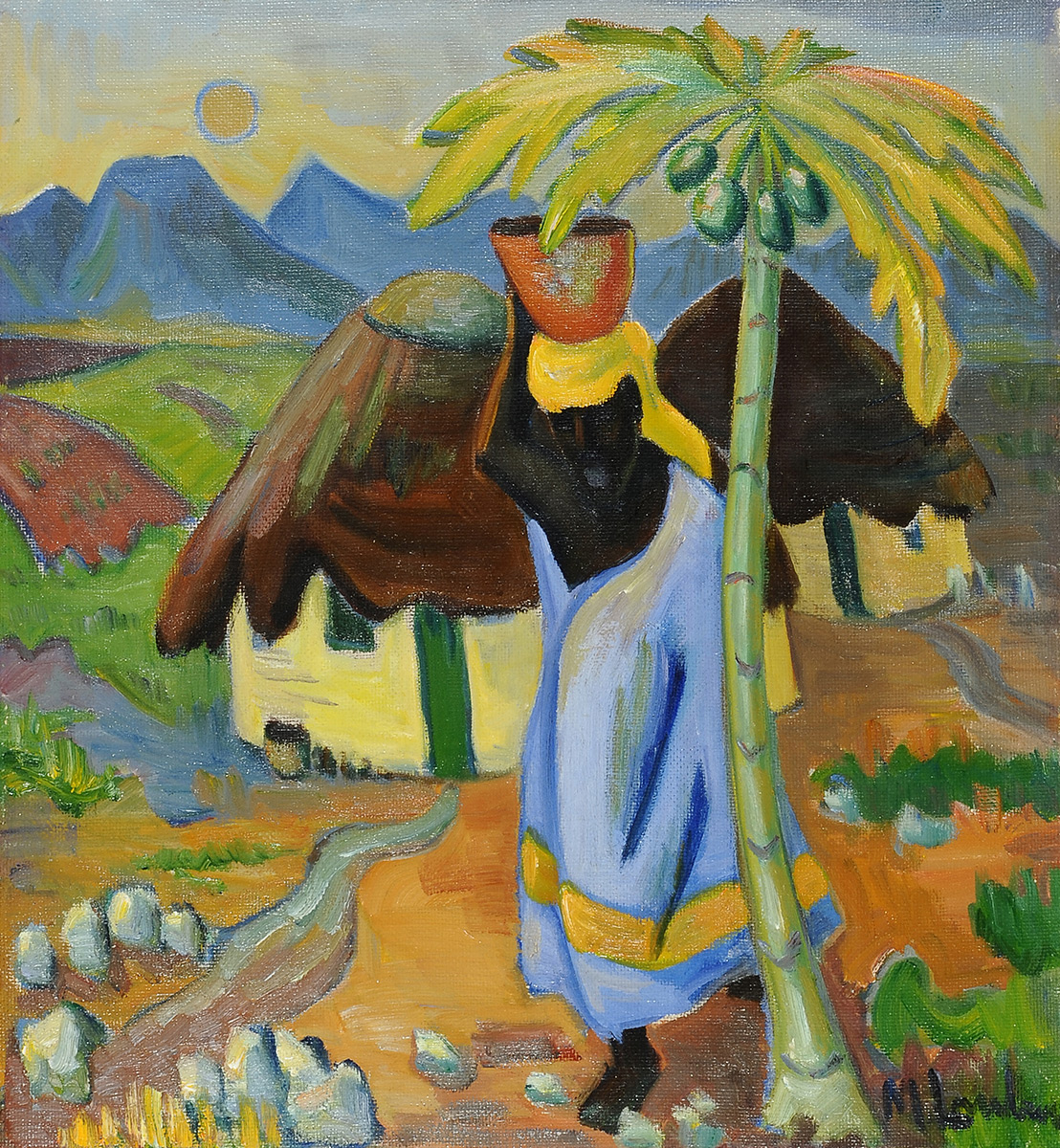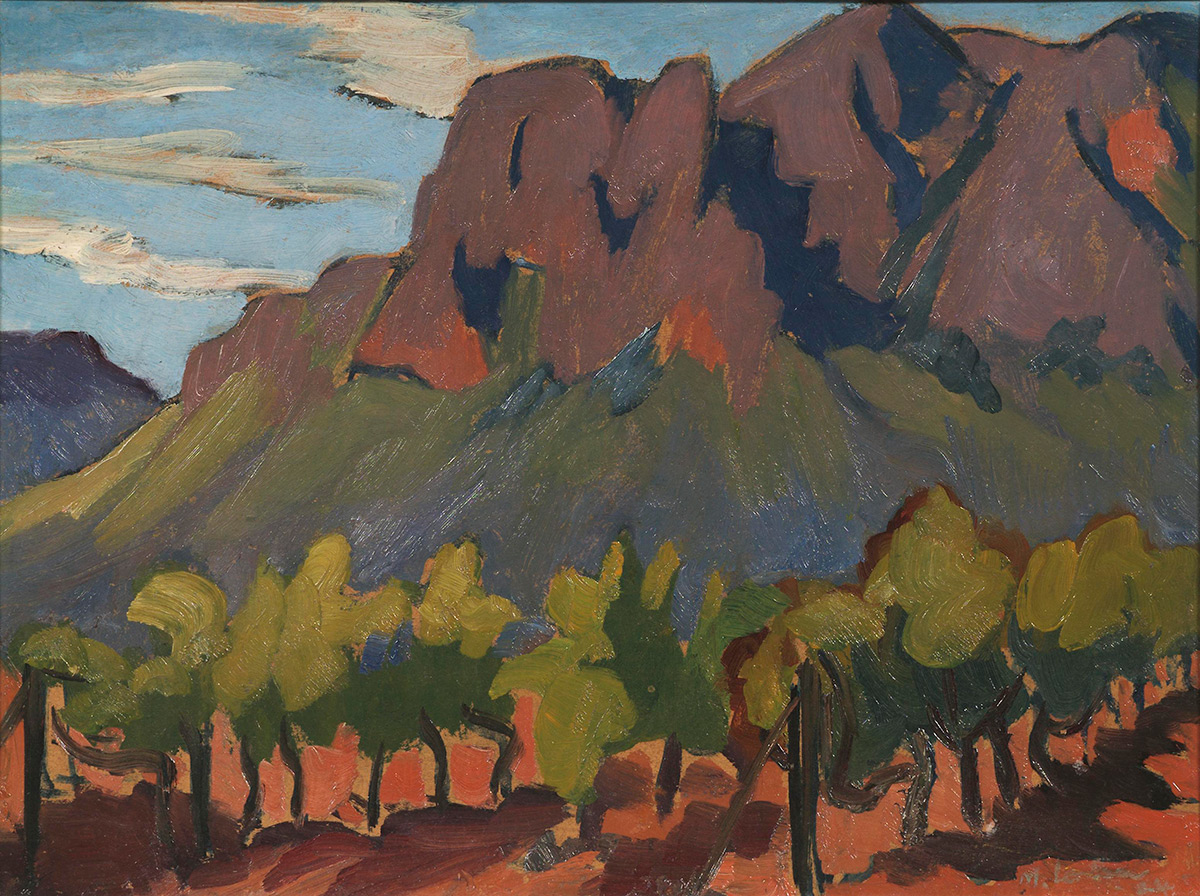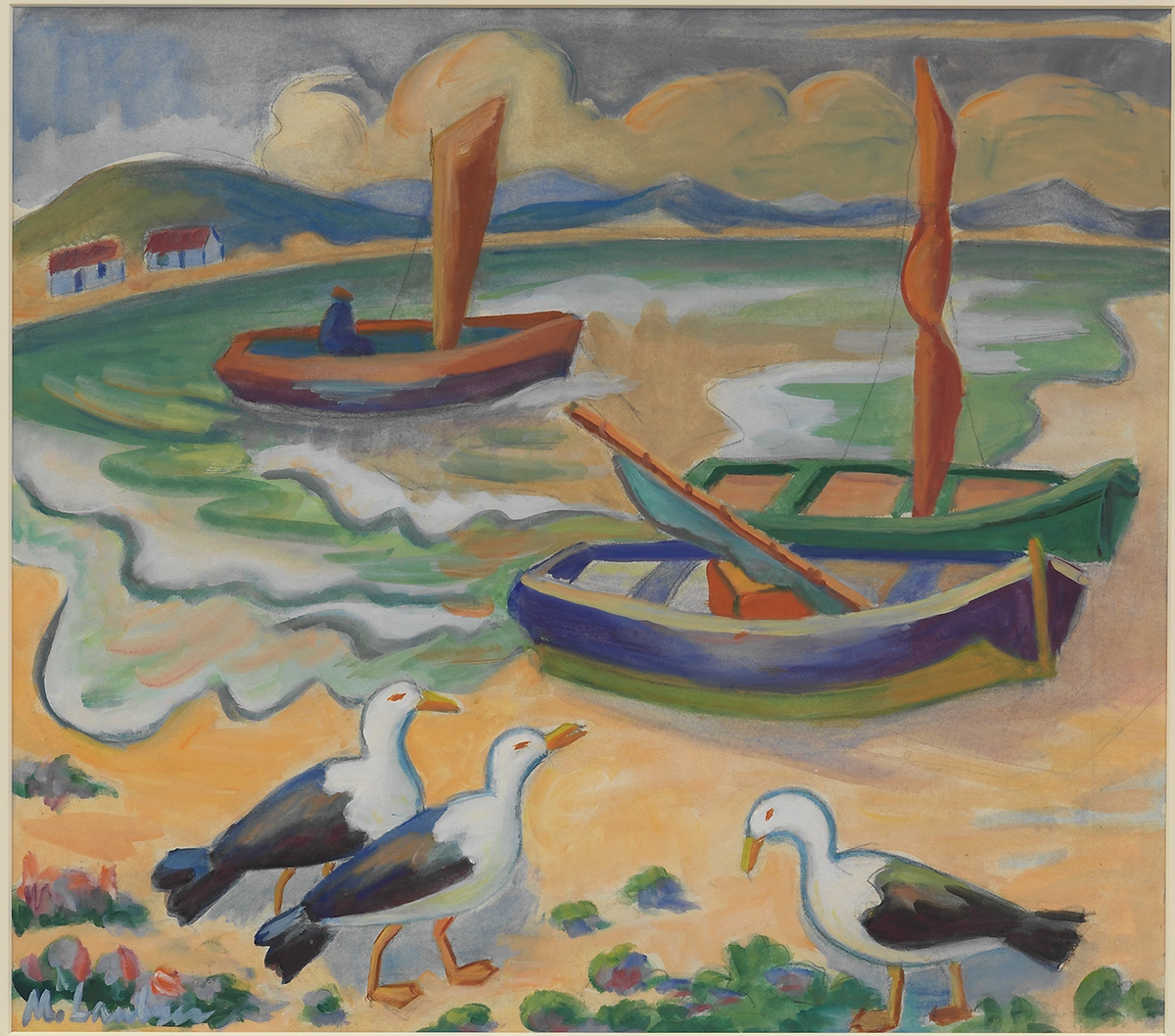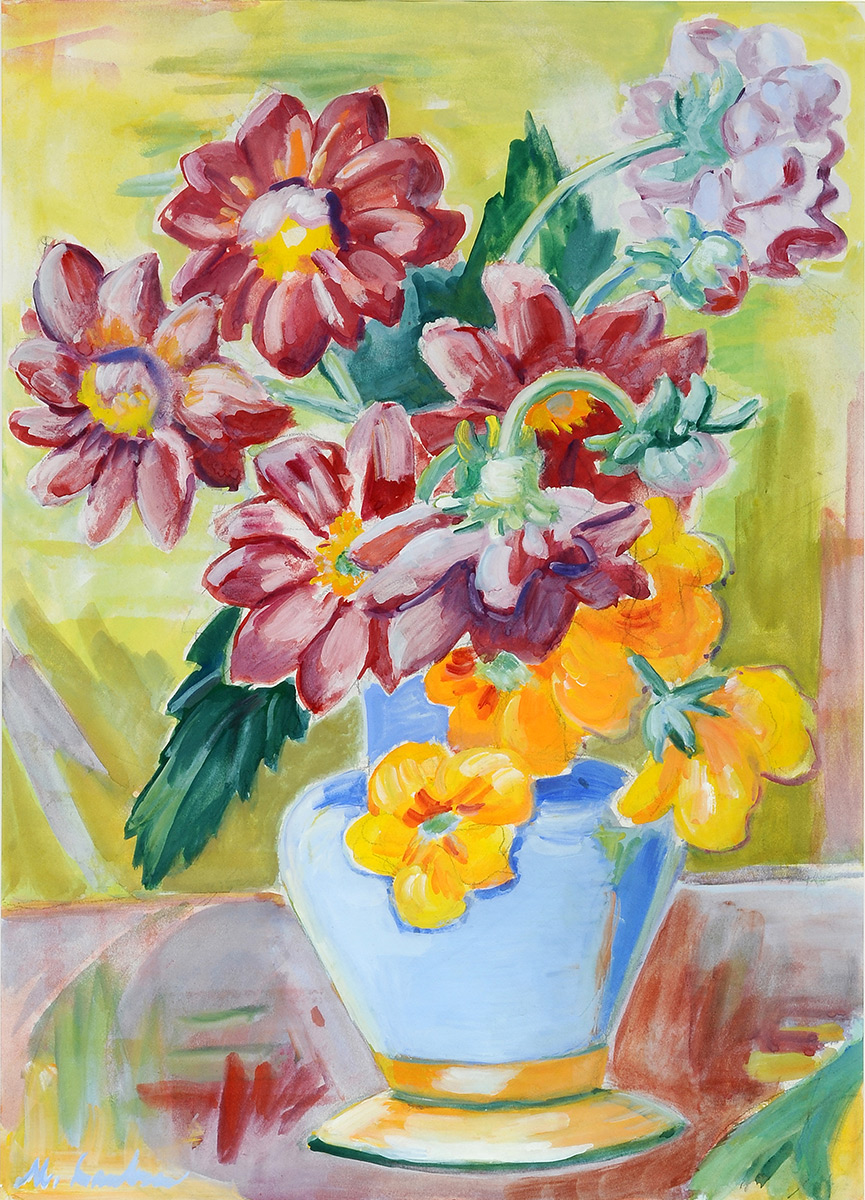Maggie LAUBSER (1886 – 1973)
Native Woman/Inboorlingvrou
1946
oil on board
size unknown
In our commitment to preserving and presenting South Africa’s artistic heritage, the SABC Art Collection recognises that certain artworks in this collection were produced in historical periods shaped by intersecting apartheid and colonialism. As such, some titles and descriptions may reflect the biases, prejudices and perspectives that were prevalent during those times. These titles are retained to respect the integrity of the original artworks and the contexts in which they were created, offering a fuller understanding of the complexities in our collective history.
We acknowledge that such language may be harmful or offensive today and are committed to addressing these issues thoughtfully. Where possible, additional context is provided to help viewers engage with these works critically and respectfully, fostering conversations around South Africa’s past, its ongoing impact, and the pursuit of a more inclusive future. This is work in… Continue Reading
BIOGRAPHY
Maria Magdalena (Maggie) Laubser was a renowned South African artist known for her contributions to Expressionism in South Africa. Born in the Malmesbury district of the Western Cape, her early life on a farm influenced much of her later work. Laubser initially trained as a singer but shifted her focus to visual arts after encouragement from friends and mentors in Cape Town.
In 1913, Laubser travelled to Europe, where she immersed herself in the artistic movements of the time. Her exposure to German Expressionism significantly shaped her style, leading her to emphasise the emotional resonance of colour and form rather than mere representation. This approach allowed her to create vivid, expressive depictions of South African rural life, often portraying her subjects with empathy and respect.
On her return to South Africa in 1924, Laubser faced some initial criticism for her modernist techniques, which differed from the prevailing artistic norms. However, over time, her work gained recognition, and she became a celebrated figure in South African art. She contributed to exhibitions, including the British Empire Exhibition in Johannesburg in the mid-1930s, and continued to create and showcase her works until her death on 17 May 1973.
Laubser’s legacy is marked by her innovative use of strong colours and simplified lines, which paved the way for future South African artists to explore expressionist styles. Her works are now part of major collections and continue to be influential in the study of South African modern art.
In 2023, Norval Foundation presented Maggie Laubser – Portraits and the Landscape: 1886 – 1973, an exhibition that showcased Laubser’s artistic output 50 years after her death. The exhibition was curated as a companion to Norval’s Irma Stern exhibition (2021 – 22), which also focused mainly on portraits. These two women artists were pioneers in introducing expressionism to a conservative South African art public, and both were initially received with hostility. In comparison to Stern, Laubser’s work has – in recent years – received relatively little attention.
Both Laubser and Stern spent time in Berlin after World War I, and moved in the circles of the major German Expressionist artists, including Max Pechstein, Karl Schmidt-Rottluff and Franz Marc. Laubser’s brusque portraits from this period formed a pivotal grouping on the Norval exhibition. Due to personal and financial circumstances, she returned to Cape Town, and then to the rural environment and farming community of her childhood, where she retained her commitment as a painter in a cultural environment that ascribed no particular significance to being an artist. With her return to her familial context, her work – unlike that of Stern – engages with the specialness of the ordinary.


